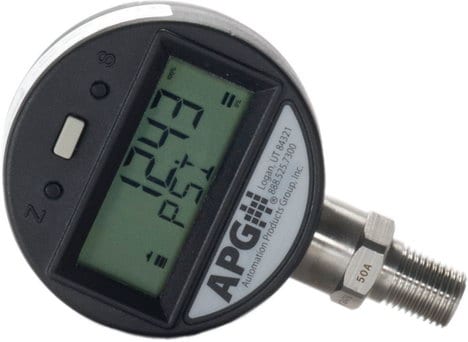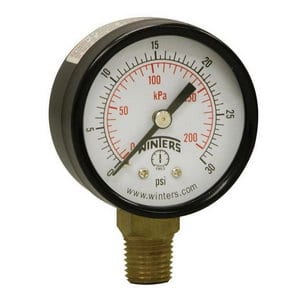Pressure gauges, defined in the simplest way possible, are instruments used to measure and display pressure. Although all pressure gauges record the same thing, several types of gauges are still used in various fields. For better or worse, there are several factors that determine whether or not a specific gauge should be used in the field. Take, for example, one of the oldest, and still the most popular, Bourdon pressure gauge. The first models of these have existed over a hundred years, whereas now digital pressure gauges are beginning to come into competition with this classic style. Both have their positives and negatives, and we intend to expose them for their similarities and differences to better understand which type of pressure gauge is right for you.

Digital Pressure Gauge
When using pressure transducers, digital pressure gauges provide a highly reliable and accurate reading, which can be clearly read on a digital screen. Unlike other pressure gauges, the digital pressure gauge allows you to change the unit reading. In addition to this feature, the majority of digital pressure gauges also have innovative features, such as tare or peak hold. Overall, these devices are more durable and reliable in harsher conditions because they do have mechanical pieces that can be affected by extreme heat or cold. Dial or mechanical analog pressure gauges, such as the Bourdon tube, will constantly need to be maintained because parts, usually the spring, need to be recalibrated in order to provide accurate results.
Digital pressure gauges are traditionally constructed in a Wheatstone bridge circuit and are operated through piezoresistive technology and read the pressure applied from the device’s diaphragm. The resistance to pressure is measured on the Wheatstone circuit, which converts proportionately to the amount of applied pressure.
Bourdon Tube

The Bourdon Tube is the most common dial gauge device used, and operates mechanically by several gears and parts working together. Compared to the digital gauge, Bourdon tubes are more susceptible to giving inaccurate readings due to their mechanical makeup, as well as being susceptible to shock resistance and vibration. Another problem is that Bourdon tubes are bad at giving low-pressure readings. Along with giving poor readings, the device’s springs will eventually become unwound and need to be worked on to provide consistent readings; however, that happens after an extended period of use. When new, the tubes provide consistent readings and are highly sensitive. Although they cannot simply switch to different pressure readings, they are available in them separately and come at a much lower price than digital pressure gauges.

